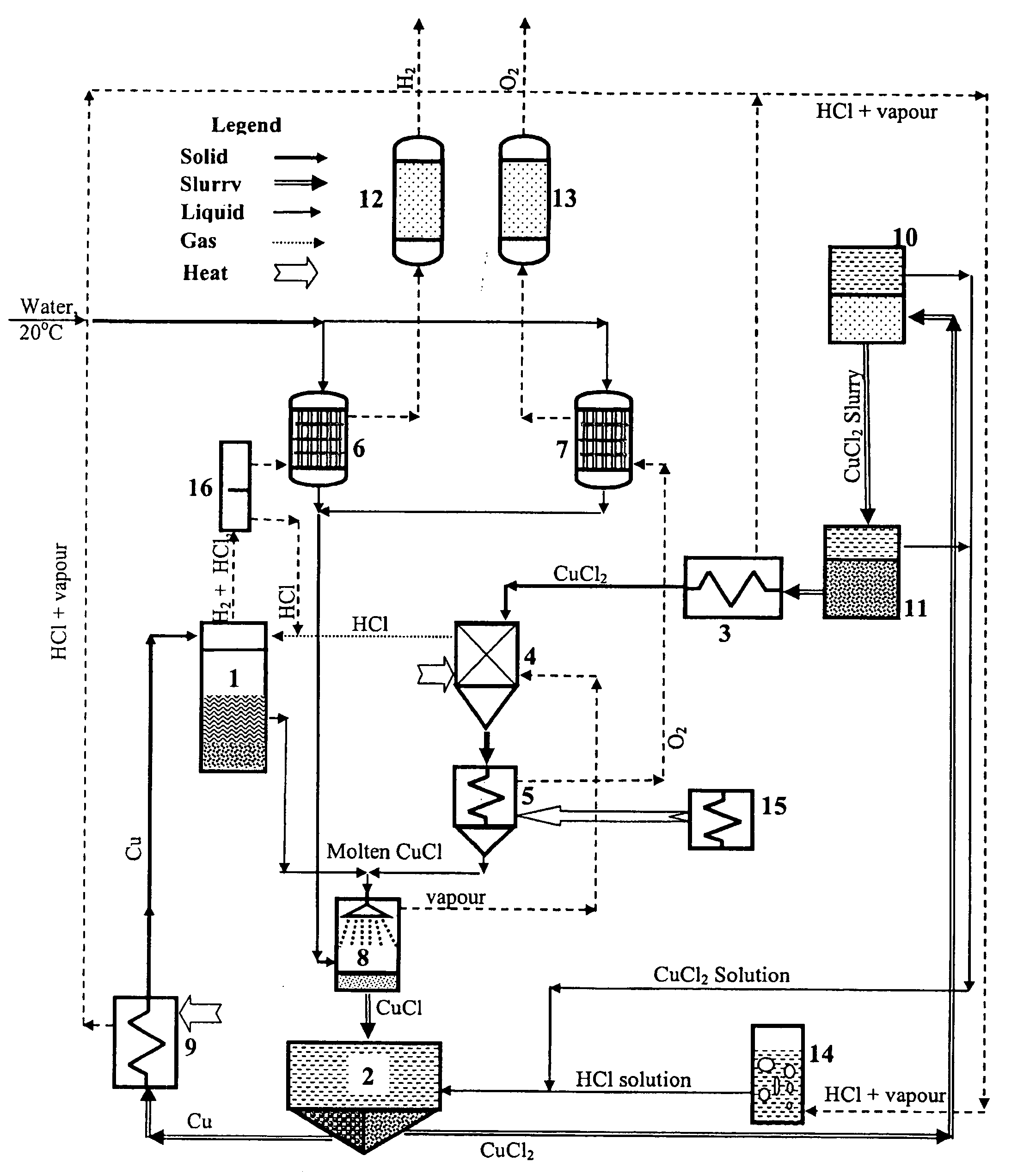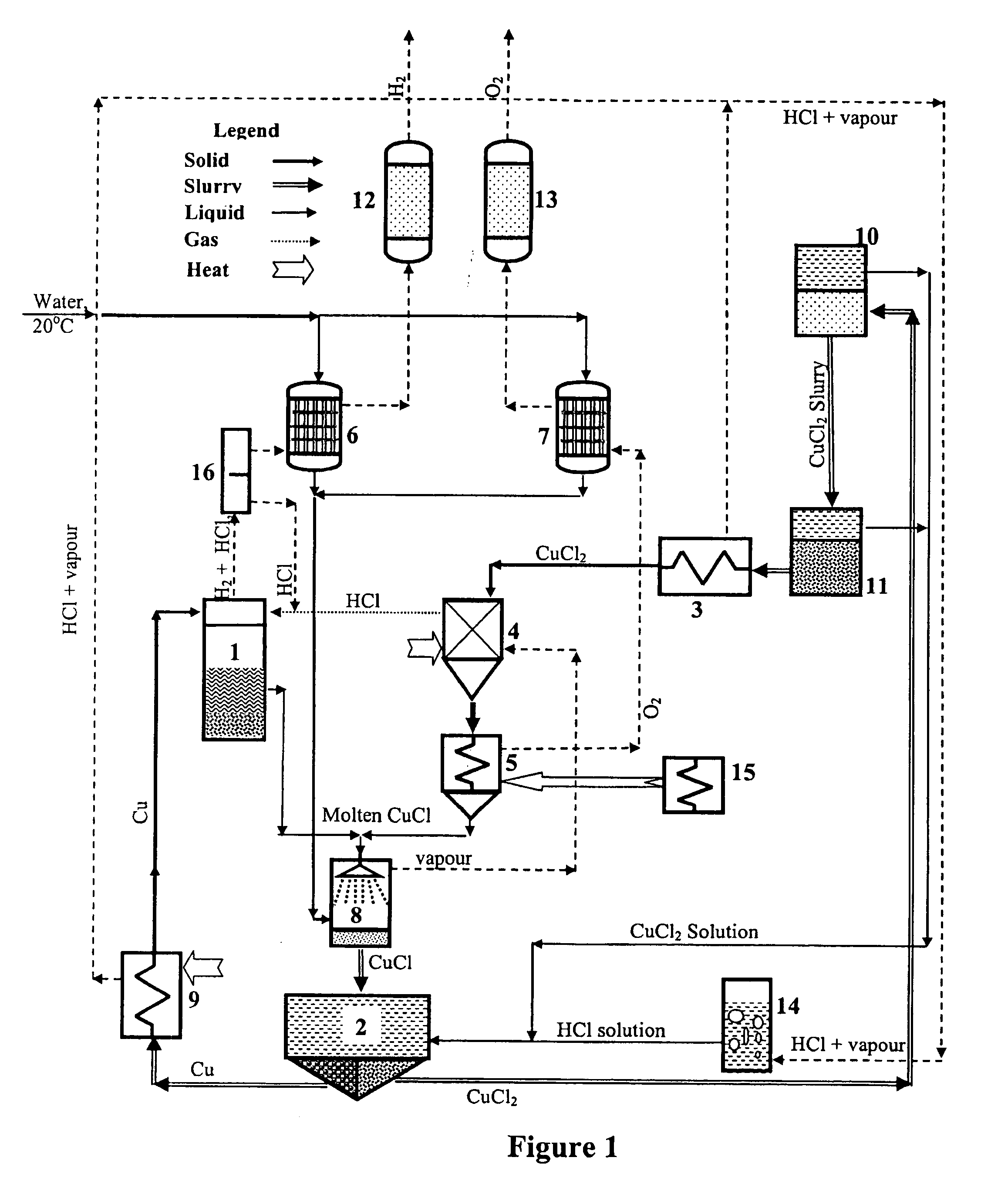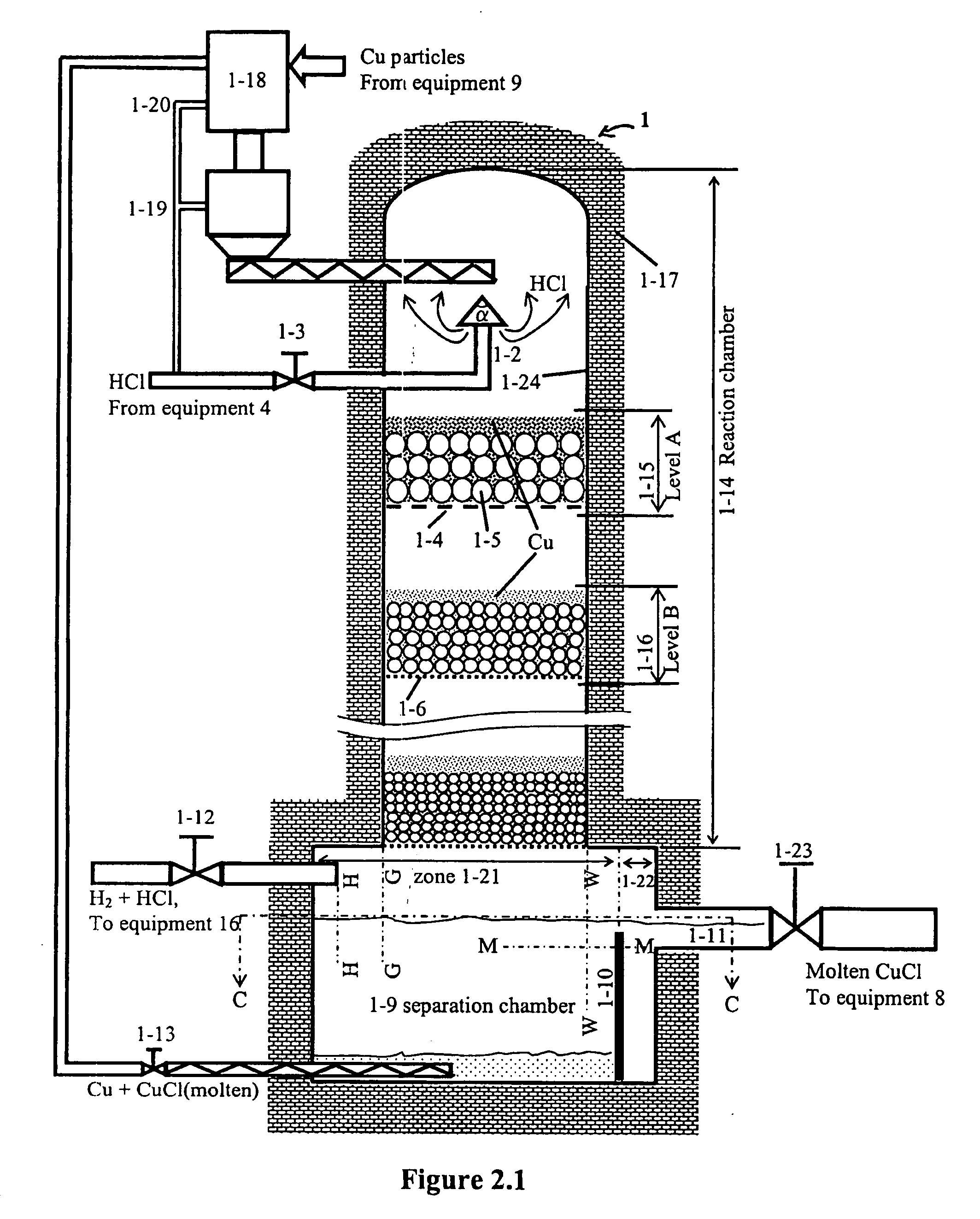Production of hydrogen from water using a thermochemical copper-chlorine cycle
a technology of thermochemical cycle and apparatus, applied in the direction of gas generation device, high temperature liquid gas reaction, inorganic chemistry, etc., can solve the problems of increasing maintenance costs, generating undesirable side reactions, affecting the operation of equipment, etc., and achieve the effect of efficiently recovering the heat produced in the system
- Summary
- Abstract
- Description
- Claims
- Application Information
AI Technical Summary
Benefits of technology
Problems solved by technology
Method used
Image
Examples
Embodiment Construction
The Closed Copper-Chlorine Thermochemical Cycle and its Heat Coupling Network
[0035]FIG. 1 is the detailed flow chart and FIG. 5 shows a simplified flow chart that shows the reactors, vessels, and the like, where each of the steps of the thermochemical five-step cycle occurs. The flexibility of the cycle is apparent in that a number of major steps can be combined in different ways to provide closed cycles of varying length and therefore steps. The following equations set out the reactions associated with each step of five-, four- and three-step cycles:
(1) Five-Step Cycle
[0036]1. 2Cu (solid)+2HCl (gas)=2CuCl (molten)+H2 (gas) at about 450° C.
2. 4CuCl (solution)=2Cu (solid)+2CuCl2 (slurry) in HCl acid from about 70 to about 90° C.
3. CuCl2+free water=CuCl2.nH2O (solid)+water vapour (n could be an integer between 0 and 5) from about 30 to about 120° C.
4. CuCl2.nH2O (solid)+H2O (steam)=CuOCuCl2 (solid)+2HCl (gas)+nH2O (gas) (n could be 0-5) from about 375 to about 450° C.
5. CuOCuCl2 (soli...
PUM
| Property | Measurement | Unit |
|---|---|---|
| temperature | aaaaa | aaaaa |
| temperature | aaaaa | aaaaa |
| temperature | aaaaa | aaaaa |
Abstract
Description
Claims
Application Information
 Login to View More
Login to View More - R&D
- Intellectual Property
- Life Sciences
- Materials
- Tech Scout
- Unparalleled Data Quality
- Higher Quality Content
- 60% Fewer Hallucinations
Browse by: Latest US Patents, China's latest patents, Technical Efficacy Thesaurus, Application Domain, Technology Topic, Popular Technical Reports.
© 2025 PatSnap. All rights reserved.Legal|Privacy policy|Modern Slavery Act Transparency Statement|Sitemap|About US| Contact US: help@patsnap.com



